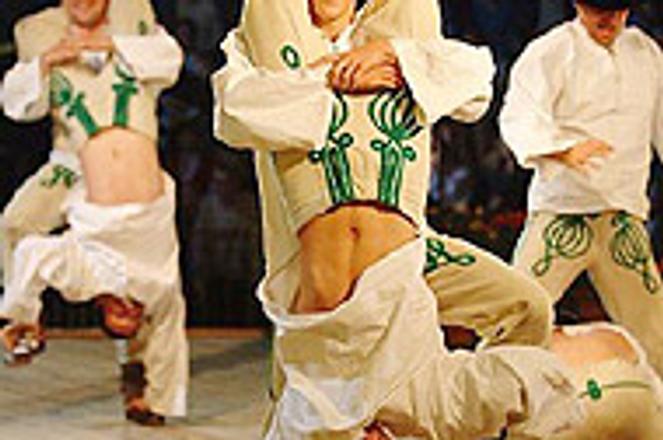GYMNIK's rigorous repertoire.
photo: Courtesy of BKIS
BRATISLAVA castle's historical role as guardian of the crown jewels is the inspiration behind the creators of the Summer of Culture's new cycle - Folklore Jewels. The dominating fortification will now watch over the country's traditional dance and music gems.
Beginning July 30, the cycle will take place over five Saturdays. It is primarily designed as a magnet for foreign visitors, but will also try to exert its pull on the locals. The cycle will provide examples of folk customs from across Slovakia's different regions.
"The dimension of Folklore Jewels is larger than that of folk festivals, such as Detva or Myjava, chiefly tied to the regions in which they take place," say the organizers. They proudly add that the popular artistic ensemble Lúčnica will "close this folk-artistic pilgrimage through our national culture" on August 27.
The cycle starts Saturday, July 30, at 19:00. On three of the Saturdays, "guardians" of music and dance from western, eastern and central Slovakia will offer music and dance performances. On the fourth Saturday, the Romathan theatre troupe from Prešov will present Roma minority art under the label Dulcimer, Dances, Violins - Oh, Those Roma Songs, on August 6. The last week will belong to Lúčnica.
The opening programme presents western Slovak traditions: We Have Arrived. It will bring the Javorník (Lúky pod Makytou), Lubená (Poluvsie near Prievidza) and Gymnik (Bratislava) folk ensembles to the stage.
The eastern Slovakia Saturday will feature the Zemplín ensemble and guest Uralská Večora from Yekaterinburg, Russia on August 13.
The Saturday after, August 20, will be reserved for performers active in central Slovakia, the "heart of Slovakia". The evening's riches will see a handful of dance ensembles, female as well as male choirs, fujara players, helicon musicians and a cracking-the-whip show.
Prepared by Spectator staff


